What does Jane Austen have to do with this Museum? I recently discovered that we are linked to the author of Pride and Prejudice and many other classics through two talented sisters, the English artists Gertrude Demain Hammond (1862–1952) and Christiana Demain Hammond (1860–1900).
Often it's the stories that wind around our Museum objects that make them extraordinary. This skillful and stunning portrait of Christiana, painted by Gertrude, is one of those objects that is much more than what you see at first glance.
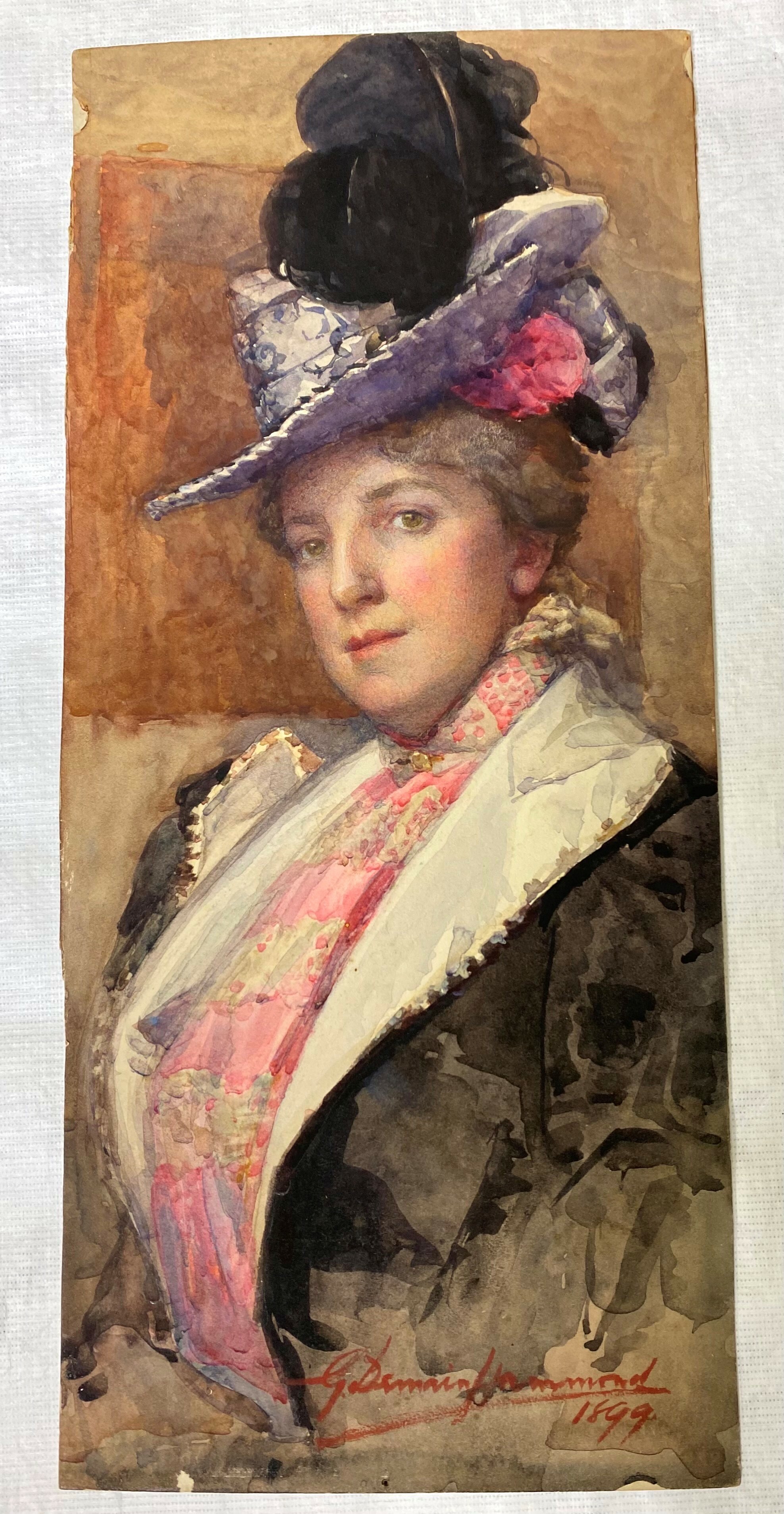
It is the portrait of a sister, an illustrator, an artist, a woman in a man’s world, someone lost too soon. Gertrude painted it in 1899 after her marriage to Henry McMurdie. Christiana, a bridesmaid at the wedding, is pictured wearing her bridesmaid’s dress.
Christiana and Gertrude, along with their brother Percy, were talented artists. Christiana was the eldest, born 6 August 1860 in Camberwell, London. Gertrude was born in 1862 and Percy in 1865. The two sisters studied at the Lambeth School of Art. Both were recognised as promising artists and awarded 3-year scholarships to the Royal Academy Schools in London where they were instructed in life drawing and watercolour. Recognition came again and Gertrude gained a further 3-year scholarship. However, Christiana was in declining health and could not continue her study.
Gertrude and Christiana went on to become well-known and prolific illustrators. Gertrude’s work appeared in a range of London journals, and in the literary works of Edmund Spenser, William Shakespeare and Charles Dickens. Christiana’s pen illustrations featured in, among other publications, editions of Jane Austen’s work: Emma (1898), Sense and Sensibility (1899) and Pride and Prejudice (1900). Working in a predominately male-dominated field, the sisters typically signed their names as G Demain Hammond and Chris Demain Hammond to hide their gender and to enhance their opportunities.
Tragically, Christiana died in 1900, aged just 39. Gertrude continued as a practising artist. Her work was included in The Yellow Book, a controversial and fashionable London magazine of art, poetry and short stories. The publication gave art and literature equal status and championed the idea that they should be free of the strict moral constraints of Victorian society. The Yellow Book’s name comes from the colour of its covers, inspired by the way controversial French novels were presented in at the time.
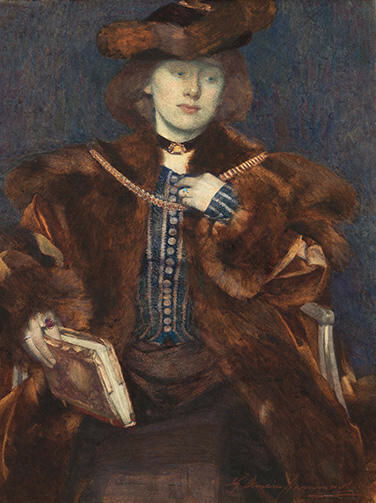
Gertrude was also recognised for her achievements in watercolour. She was elected to the Royal Institute of Painters in Water Colours in 1896 and also exhibited with the Royal Academy. In 1906 she sent works to Christchurch, to be included in the New Zealand International Exhibition. Two of these watercolour paintings are now in public collections; Christchurch Art Gallery Te Puna o Waiwhetū holds A Reading from Plato, which was purchased from the exhibition by James Jamieson and April. Youth’s Spring Tribute is held in the collection of the Art Gallery of New South Wales, purchased direct from the International Exhibition. The latter painting was described in the Lyttelton Times of 12 December 1906 as “a freshly charming pastoral painted in a hyacinthine colour scheme with great refinement”.
Canterbury Museum’s portrait of Christiana is important because it is one of the few depictions of one of the most productive illustrators of the 1890s. It's also an excellent work by Gertrude, a significant artist.
The Museum also cares for a small booklet Chris Hammond in Memoriam, May 11th 1900 which contains a rare photograph of Christiana and an outline of her life.
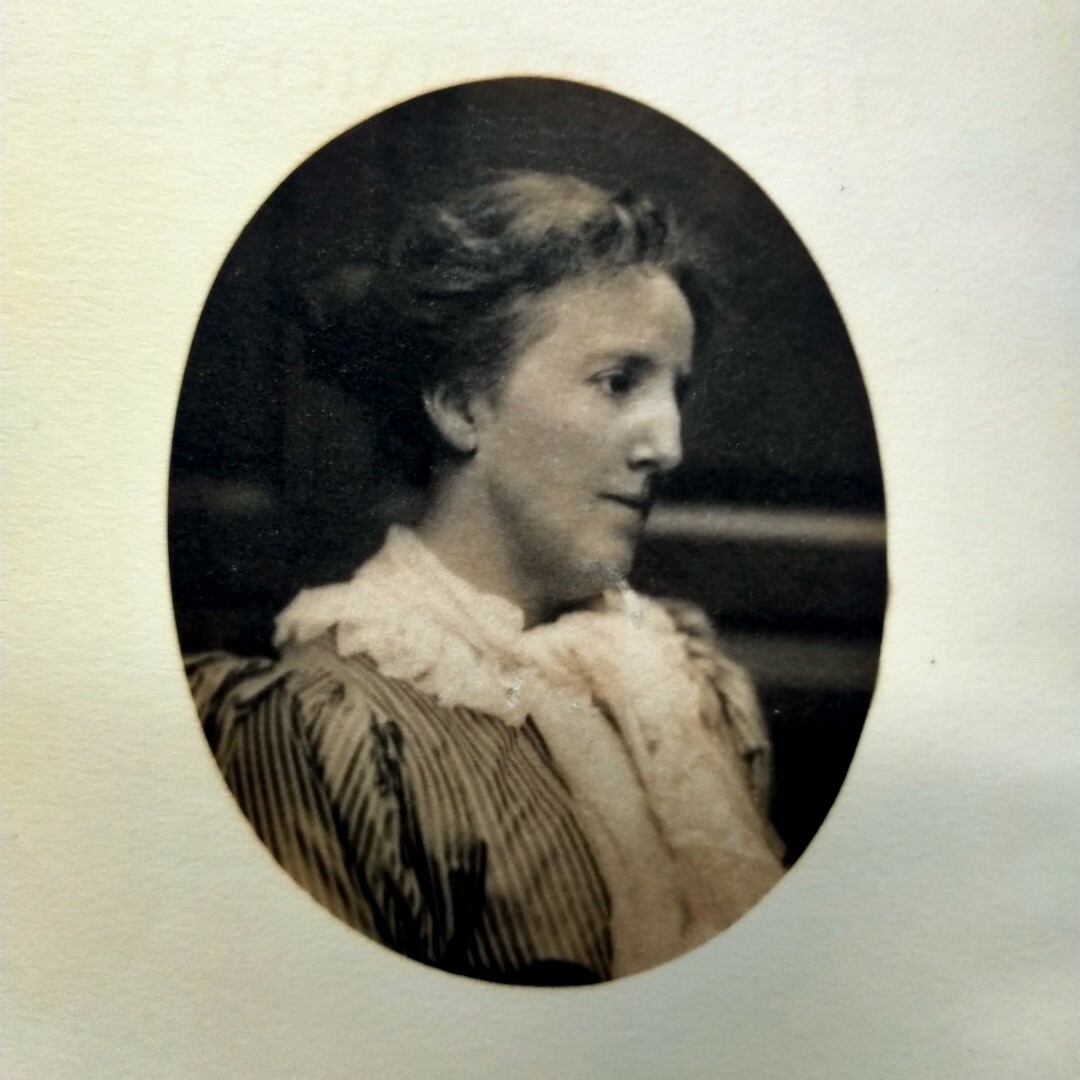
The booklet contains text reprinted from the Argosy of July 1900 by Alfred Forman and examples of some of Christiana’s many (no less than 22) book illustrations. It also highlights some of her significant oil and watercolour works, including exhibited portraits of her sister Gertrude and good friend Alma Murray. The portrait and memoriam booklet were among a large number of items gifted to Canterbury Museum in the 1950s and 1960s from the collection of Rev Arthur Stanley Moffatt and his wife Ethel Jane Moffatt.
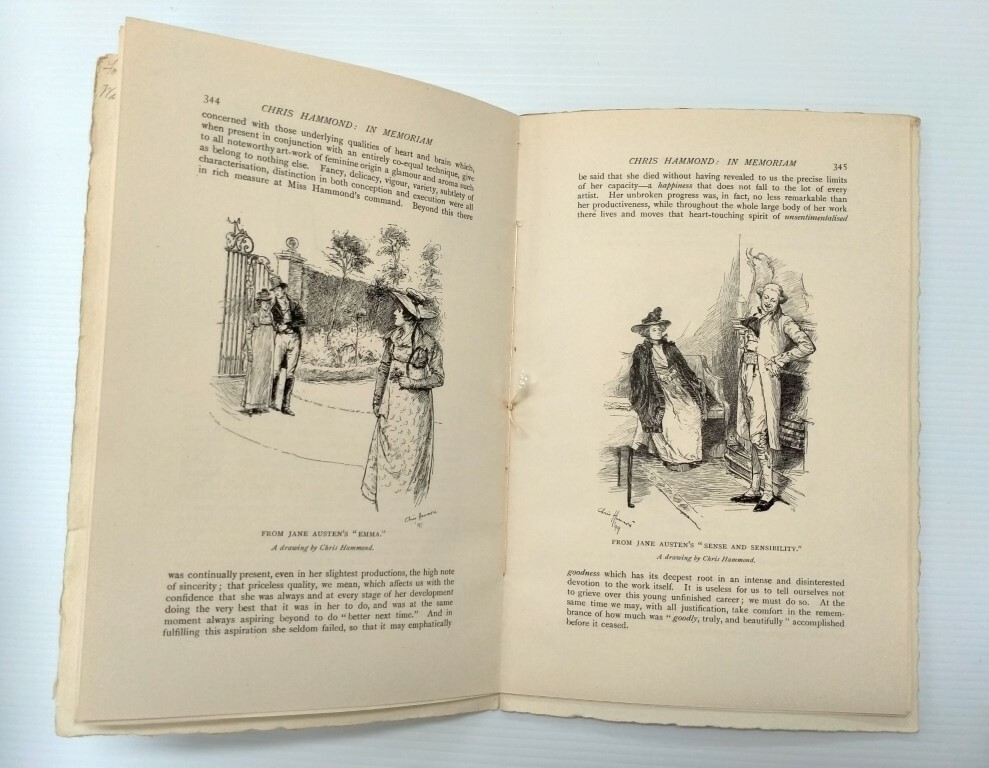
Moffatt family descendants recently rediscovered, in their family collection, Christiana’s original pen and ink illustrations for Sense and Sensibility in 1899. These pen sketches have now found a permanent home at Jane Austen’s House, a museum in the cottage in Chawton, United Kingdom where Austen wrote her novels.
There has been much wonder at how such significant original illustrations, beloved by Austen fans the globe over, came to be in family archives in New Zealand. A pencil inscription inside the front cover of the Chris Hammond Memoriam booklet in Canterbury Museum’s collection may give a clue. The inscription reads “For Dick from Gertrude McMurdie, Worthing – June 1935”. Dick was the informal name of Rev Arthur Stanley Moffatt, the husband of the donor of the portrait and booklet to Canterbury Museum.
How Moffatt came to receive the booklet directly from Gertrude along with the beautiful watercolour of Christiana is as-yet unknown. And why Gertrude would wish to pass her personal collection of very intimate items relating to her sister to him is a subject for further investigation. These items will be interesting to research in connection with the wider group of over 200 objects donated by Ethel Moffatt to the Museum. This group of family objects are connected to early European settler life in New Zealand, but perhaps there are more amazing discoveries and connections to be made.
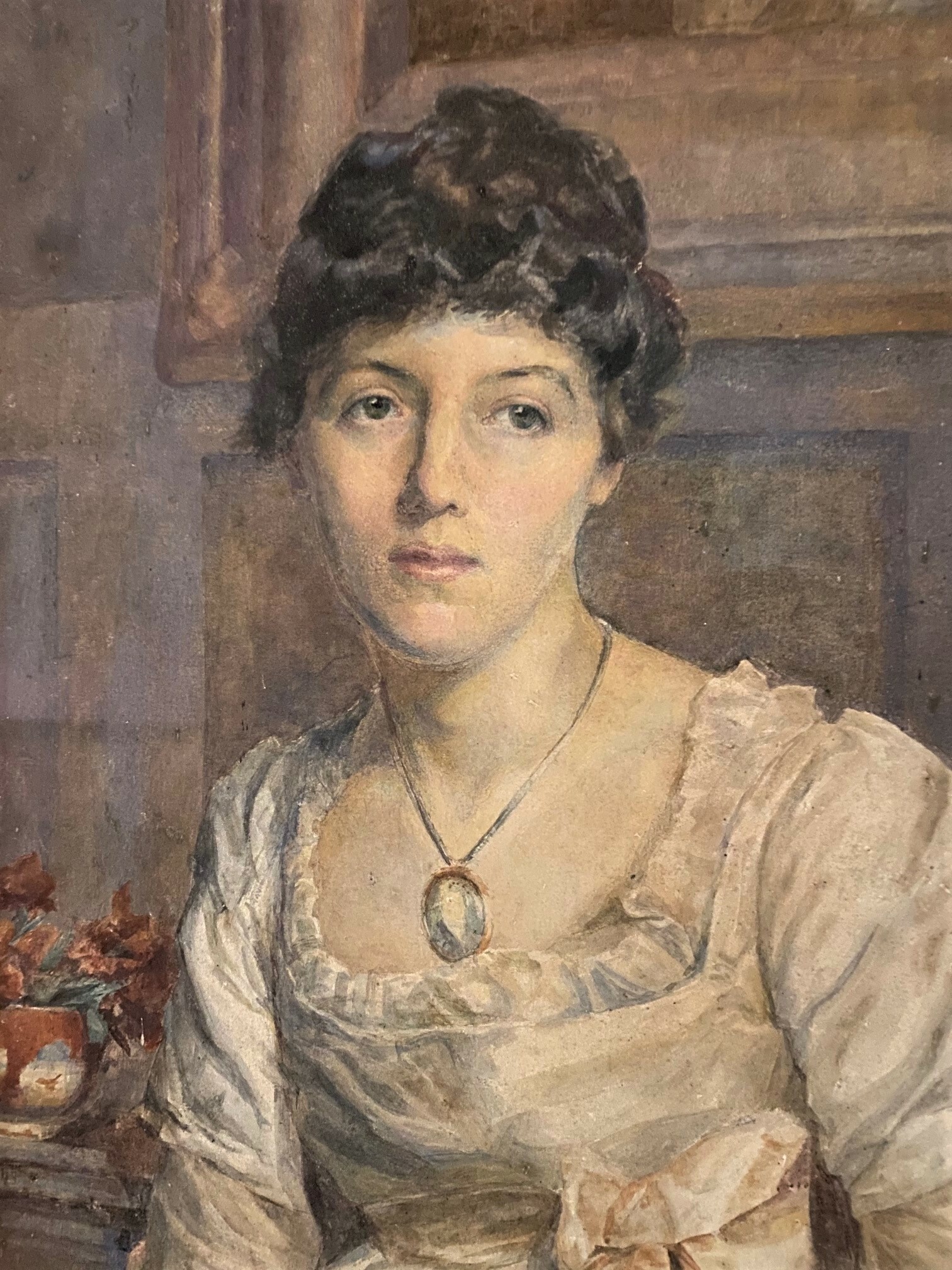
References:
Laurel Ann Nattress. March/April 2020. Austen in the Attic. Jane Austen’s Regency World Issue 104. P.20-26. Edinburgh.
Ruth Williamson. December 2019. Living a Dream: Drawings Unearthed. Chronicle. P.12-14. Jane Austen Society of Australia.
https://janeaustens.house/object/illustrations-for-sense-and-sensibility-by-chris-hammond/ Accessed 7 October 2022
https://christchurchartgallery.org.nz/blog/collection/2015/02/a-reading-from-plato-by-gertrude-hammond
Accessed 7 October 2022
https://www.artgallery.nsw.gov.au/collection/artists/hammond-gertrude-demain/
Accessed 7 October 2022





